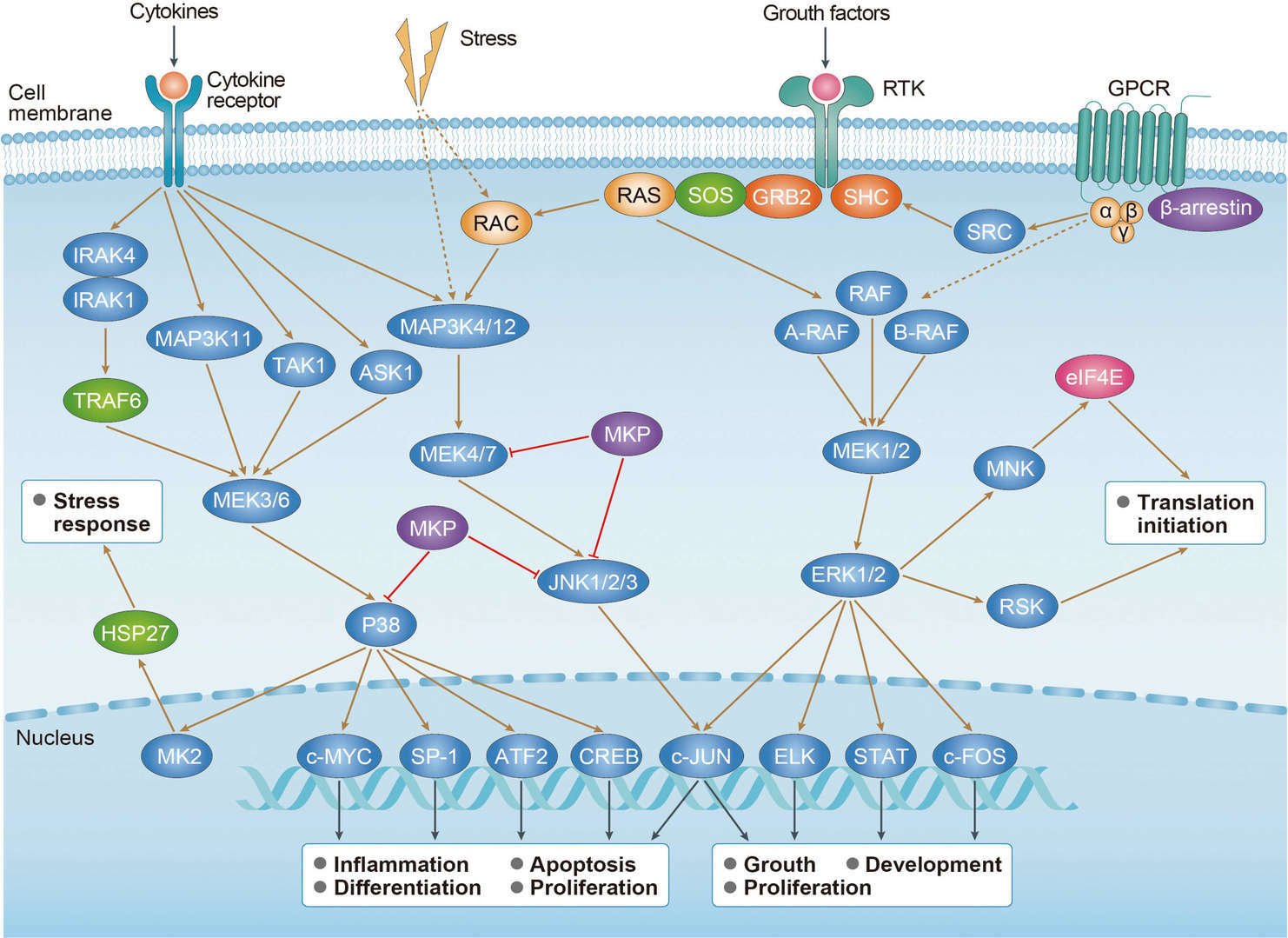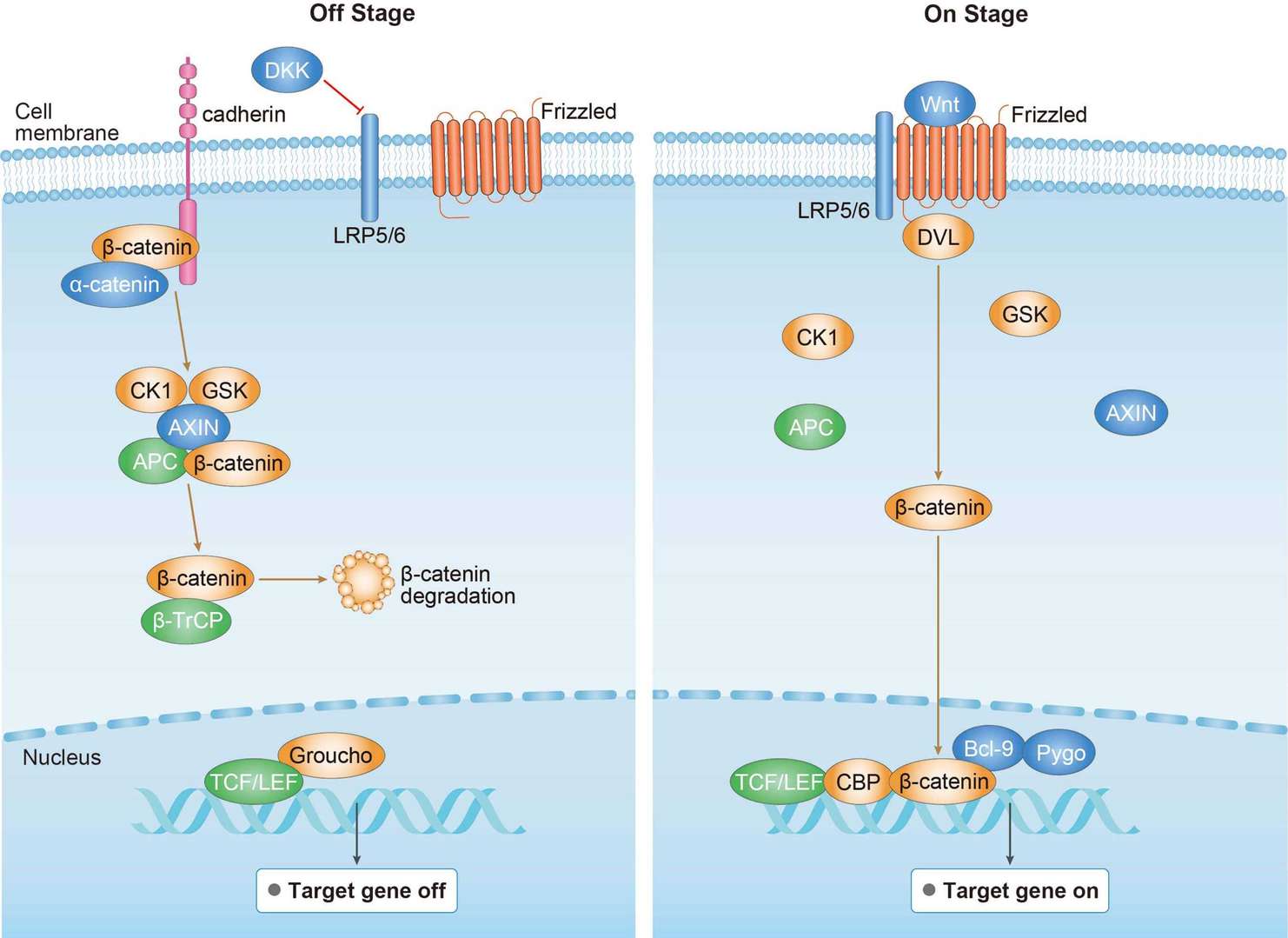

Prostate Cancer Overview - Signaling Pathway. Diagnosis. Targeted Therapy
About Prostate Cancer
Prostate cancer is the development of cancer in the prostate, a small walnut-shaped gland in men that produces the seminal fluid that nourishes and transports sperm. Prostate cancer is the second most frequent malignancy (after lung cancer) in men worldwide. The incidence and mortality of prostate cancer worldwide correlate with increasing age with the average age at the time of diagnosis being 66 years. Prostate cancer may be asymptomatic at the early stage and often has an indolent course, and may require minimal or even no treatment. Prostate cancer may cause no signs or symptoms in its early stages. Prostate cancer that's more advanced may cause signs and symptoms such as: trouble urinating, decreased force in the stream of urine, blood in semen, discomfort in the pelvic area, bone pain, erectile dysfunction. Researchers have found several factors that might affect a man’s risk of getting prostate cancer, including age, race/ethnicity, geography, family history, gene changes, and other factors with less clear effect such as diet, obesity, smoking, chemical exposures, inflammation of the prostate, sexually transmitted infections, and vasectomy. Almost all prostate cancers are adenocarcinomas. These cancers develop from the gland cells (the cells that make the prostate fluid that is added to the semen). Other types of prostate cancer include: sarcomas, small cell carcinomas, neuroendocrine tumors (other than small cell carcinomas), transitional cell carcinomas. Other than skin cancer, prostate cancer is the most common cancer in American men. About 1 man in 9 will be diagnosed with prostate cancer during his lifetime, and about 1 man in 41 will die of prostate cancer.
Overview of prostate cancer pathways
Main Signaling Pathways in Prostate Cancer
Diagnosis of Prostate Cancer
Many prostate cancers are detected on the basis of elevated plasmatic levels of prostate-specific antigen (PSA), a glycoprotein normally expressed by prostate tissue. However, because men without cancer have also been found with elevated PSA, a tissue biopsy is the standard of care to confirm cancer’s presence. A biopsy is a procedure that can be used to diagnose prostate cancer. A biopsy is when a small piece of tissue is removed from the prostate and looked at under a microscope to see if there are cancer cells. A Gleason score is determined when the biopsy is looked at under the microscope. If there is a cancer, the score indicates how likely it is to spread. The score ranges from 2 to 10. The lower the score, the less likely it is that the cancer will spread. A biopsy is the main tool for diagnosing prostate cancer, but a doctor can use other tools to help make sure the biopsy is made in the right place. For example, doctors may use a transrectal ultrasound, when a probe the size of a finger is inserted into the rectum and high-energy sound waves (ultrasound) are bounced off the prostate to create a picture of the prostate called a sonogram. Doctors also may use magnetic resonance imaging (MRI) to guide the biopsy.
Targeted Therapy for Prostate Cancer
The androgen receptor (AR) is a ligand-dependent transcription factor important in cell survival and proliferation. Several strategies for inducing androgen deprivation have been developed and are associated almost uniformly with an initial response. Bicalutamide, enzalutamide, apalutamide are developed as AR inhibitors, and abiraterone, orteronel, galeterone are developed as androgen synthesis inhibitors. Prostate-specific membrane antigen (PSMA) is cellular surface protein preferentially or almost exclusively expressed in prostate cancer. Prostate-specific membrane (PSMA) antigen antibody-drug conjugate (ADC) is a fully human IgG1 antibody conjugated to the microtubule-disrupting agent monomethyl auristatin E (MMAE), which binds to PSMA-positive cells and induces cytotoxicity. J591 is an anti-PSMA monoclonal antibody (mAb), which binds the external domain of PSMA-expressing cells and has been conjugated with 90Y and 177Lu for therapy. Enoblituzumab (formerly known as MGA271) is a humanized IgG1κ mAb recognizing human B7-H3, a member of the B7 family of immune regulators. It was developed for the treatment of cancer including castration-resistant prostate cancer (CRPC). Sipuleucel-T (trade name Provenge) is a cell-based cancer immunotherapy for prostate cancer. It is a personalized treatment that works by programming each patient's immune system to seek out cancer and attack it as if it were foreign. While referred to as a therapeutic vaccine rather than a preventive vaccine that prevents infectious disease, sipuleucel-T is instead an immunostimulant. It was approved by the U.S. Food and Drug Administration on April 29, 2010. A second vaccine that has shown a survival advantage in advanced CRPC is PROSTVAC-VF, a vector-based vaccine designed to activate T cell-mediated immune responses to PSA. Another strategy under investigation is use of mAbs such as ipilimumab and pembrolizumab against programmed cell death 1 (PD-1)/PD-1 ligand 1 (PD-L1) or cytotoxic T lymphocyte-associated antigen 4 (CTLA4) for the treatment of metastatic CRPC. Other strategies including targeting epigenetic regulation, targeting epithelial-mesenchymal transition (EMT) and stemness, targeting angiogenesis and hypoxia, targeting the cell cycle, targeting stress pathways, and targeting the bone microenvironment.
References
1. Litwin, M. S., & Tan, H.-J. (2017). The Diagnosis and Treatment of Prostate Cancer. JAMA, 317(24), 2532.
2. Vlachostergios, P. J., Paddock, M., & Molina, A. M. (2017). Molecular Targeted Therapies of Prostate Cancer. Precision Molecular Pathology of Prostate Cancer, 523-546.
3. Bilusic, M., Madan, R. A., & Gulley, J. L. (2017). Immunotherapy of Prostate Cancer: Facts and Hopes. Clinical Cancer Research, 23(22), 6764-6770.
4. Virgolini, I., Decristoforo, C., Haug, A., Fanti, S., & Uprimny, C. (2017). Current status of theranostics in prostate cancer. European Journal of Nuclear Medicine and Molecular Imaging, 45(3), 471–495.
5. Centers for Disease Control and Prevention. How Is Prostate Cancer Diagnosed? www.cdc.gov/cancer/prostate/basic_info/diagnosis.htm. Accessed 12 August 2019.
6. KEGG PATHWAY: Prostate cancer - Homo sapiens (human).
For research use only. Not intended for any clinical use.
This site is protected by reCAPTCHA and the Google Privacy Policy and Terms of Service apply.

 MAPK Pathway
MAPK Pathway Wnt Pathway
Wnt Pathway p53 Pathway
p53 Pathway